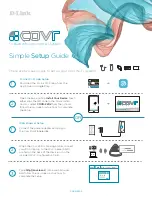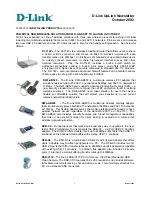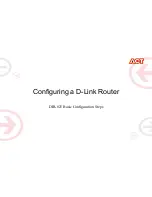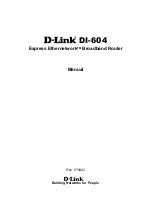
genie Basic Settings
33
N600 Wireless Dual Band Router WNDR3400v3
Note:
These settings apply separately to the 2.4 GHz b/g/n and 5 GHz a/n
bands.
Enable Guest Network
. When this check box is selected, the guest network is enabled,
and guests can connect to your network using the SSID of this profile.
Enable Wireless Isolation
. If this check box is selected, wireless clients (computers or
wireless devices) that join the network can use the Internet, but cannot access each other
or access Ethernet devices on the network.
Enable SSID Broadcast
. If this check box is selected, the wireless access point
broadcasts its name (SSID) to all wireless stations. Stations with no SSID can adopt the
correct SSID for connections to this access point.
Allow guest to access My Local Network
. If this check box is selected, any user who
connects to this SSID has access to your local network, not just Internet access.
3.
Give the guest network a name.
The guest network name is case-sensitive and can be up to 32 characters. You then
manually configure the wireless devices in your network to use the guest network name
in addition to the main nonguest SSID.
4.
Select a security option from the list. The security options are described in
Guest Network
Wireless Security Options
on page 33.
5.
Click
Apply
to save your selections.
Guest Network Wireless Security Options
A security option is the type of security protocol applied to your wireless network. The
security protocol in force encrypts data transmissions and ensures that only trusted devices
receive authorization to connect to your network.
This section presents an overview of the security options and provides guidance on when to
use which option. Although it is possible to set up a guest network without wireless security,
NETGEAR does
not
recommend it.
Wi-Fi Protected Access (WPA) encryption is built into all hardware that has the Wi-Fi-certified
seal. This seal means that the product is authorized by the Wi-Fi Alliance
(
http://www.wi-fi.org/
) because it complies with the worldwide single standard for high-speed
wireless local area networking.
WPA-PSK uses a password to perform authentication and generate the initial data encryption
keys. Then it dynamically varies the encryption key. WPA-PSK uses Temporal Key Integrity
Protocol (TKIP) data encryption, implements most of the IEEE 802.11i standard, and is
designed to work with all wireless network interface cards, but not all wireless access points.
It is superseded by WPA2-PSK.
WPA2-PSK is stronger than WPA. It is advertised to be theoretically indecipherable due to
the greater degree of randomness in encryption keys that it generates. WPA2-PSK gets
















































